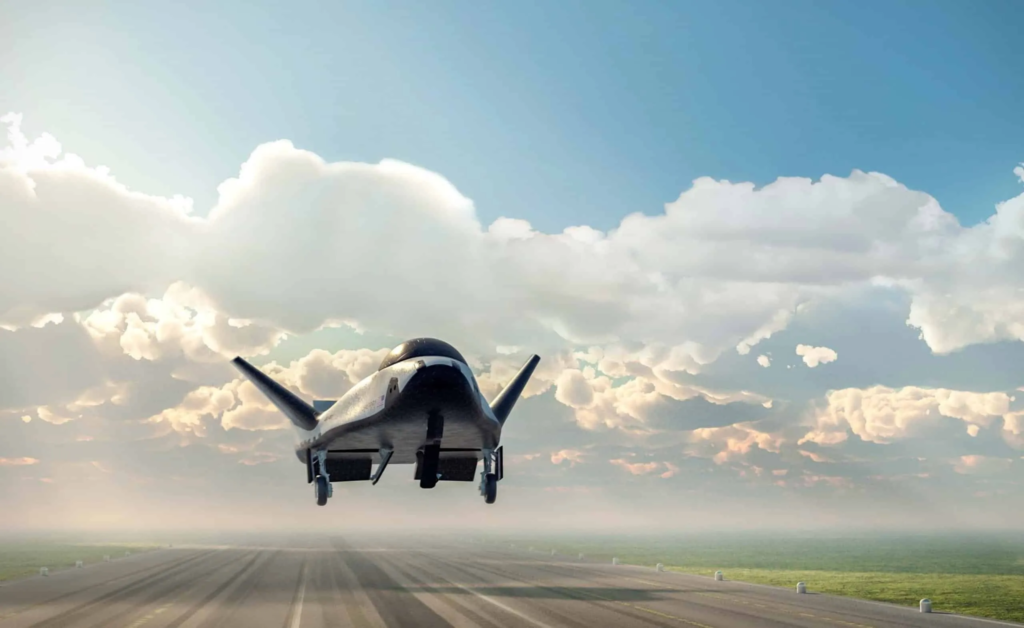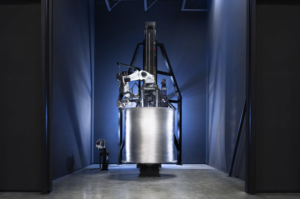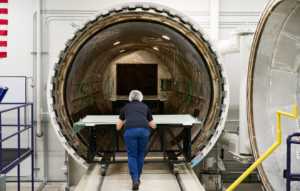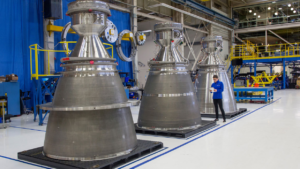
Sierra Space Is Almost Ready For Dream Chaser’s First Launch
As Dream Chaser’s first launch gets closer and closer, so have the updates from Sierra Space. The company is confident that this launch vehicle is one of the first steps in a shift toward the orbital age. The cusp of the full commercialization of space as the businesses and factories of the Orbital Age establish a permanent human presence in LEO.
However, before this process, Sierra Space needs to launch Dream Chaser and prove its capability as a next generation spacecraft. Over the last couple of weeks, we have been receiving a few different updates regarding the first test article expected to launch, named Tenacity. Just yesterday was no different with another image and insight from the company’s CEO Tom Vice.
Here, he went more in-depth into what he expects the future to look like thanks to different innovations including Dream Chaser, and also confirmed future important dates. All of which conitues to lead up to the long awaited first Dream Chaser launch not long from now. Here I will go more in-depth into the most recent updates on the spaceplane, what Tom Vice had to say, what to expect in the near future, and more.
New Update

Just yesterday Sierra Space tweeted saying, “We are at a turning point for our civilization, pivoting from 60 years of #space exploration to a new era of unprecedented economic activity, manufacturing & growth that will drive a new trillion-dollar industry. More from Tom Vice, Sierra Space CEO” This included a new image of a Dream Chaser test article continuing to go through the thermal tile application process. Taking a closer look, you can clearly see each individual tile, a lot of which with very specific dimensions. This aligns with an update just over a month ago in October when the company tweeted mentioning, “Right now, our Dream Chaser team is hard at work affixing more than two thousand hand-cut thermal tiles. We’ll have more photos and close-ups of Tenacity coming soon.”
In addition to these images and tweets, the CEO of Sierra Space Tom Vice had a lot to say regarding this launch vehicle’s future and the commercialization of space. In a quote, he said, “the most profound chapter in human history is the industrial revolution happening in LEO, just 250 miles above our heads. We are at a turning point for our civilization, pivoting from 60 years of space exploration to a new era of unprecedented economic activity, manufacturing, and growth in space. This burgeoning epoch is called the Orbital Age, and it will drive a new trillion-dollar industry.”
Not only this, but he also confirmed some dates regarding Dream Chaser and the LIFE Habitat’s future. He commented, “Our business ecosystem architecture will unlock this new era. It starts with leveraging our revolutionary technologies such as the first commercial family of spaceplanes, and the first commercial family of ultra-large and ultra-strong expandable and tailorable space facilities. These technologies have been in development for several years, and today are in advanced stages of production and test. Our Dream Chaser spaceplane will launch to the International Space Station starting in 2023, and our expandable space module system, LIFE™, having successfully completed two critical ultimate burst tests, will be on orbit in four years.
Dream Chaser’s first launch will be atop United Launch Alliance’s Vulcan Centaur assuming everything goes well with the rocket’s upcoming maiden flight. In just a few months from now, Vulcan and its two BE-4 engines will launch for the first time. If everything goes well, Dream Chaser will be integrated on top of the launch vehicle within payload fairings in the third quarter of 2023. As this date gets closer Sierra Space will need to finish not only the thermal tile application but also the entity of the launch vehicle, complete final tests, and more.
Dream Chaser’s Busy Schedule

Now that we know more about Dream Chaser’s progress and recent updates, we can take a closer look at its upcoming mission and what exactly is expected of the spacecraft. This first mission scheduled in 2023 is named SNC DEMO-1. Also known as Dream Chaser Demo-1, it is the planned first flight of the Sierra Nevada robotic resupply spacecraft Dream Chaser to the International Space Station (ISS) under the CRS-2 contract with NASA. In terms of this deal with NASA, a second phase of contracts (known as CRS-2) was solicited in 2014. In 2015, NASA extended CRS-1 to twenty flights for SpaceX and twelve flights for Orbital ATK. CRS-2 contracts were awarded in January 2016 to Orbital ATK’s Cygnus, Sierra Nevada Corporation’s Dream Chaser, and SpaceX’s Dragon 2, for cargo transport flights beginning in 2019 and expected to last through 2024.
SNC’s proposal would use a cargo version of its Dream Chaser crew vehicle, the ‘Dream Chaser Cargo System’. The proposed cargo Dream Chaser included an additional expendable cargo module for uplift and trash disposal. Downmass would only be provided via the Dream Chaser spaceplane itself. Specifically, under NASA’s Commercial Resupply Services 2 (CRS-2) contract, Dream Chaser will provide a minimum of seven cargo service missions to and from the space station. With the help of its Shooting Star service module, Dream Chaser can deliver up to 5,500 kg of pressurized and unpressurized cargo to the space station, including food, water, supplies, and science experiments, and return to Earth. Dream Chaser can return critical cargo at less than 1.5 g’s using a gentle runway landing.
Shooting Star adds a service for NASA to send additional critical science, food, and cargo to the space station. Crews can access the Shooting Star via the aft hatch, berthing to the space station. Traveling through the Shooting Star takes them to the forward portion where they can open the hatch and gain access to the Dream Chaser. When attached to the space station, Shooting Star provides a normal cabin environment for astronauts to work, and a prime location for cargo to be removed and placed onto the station after berthing. Shooting Star offers cargo disposal services for NASA. Once separated from Dream Chaser, the cargo module burns up safely in the Earth’s atmosphere and Dream Chaser glides gently back onto Kennedy Space Center’s runway. Since Shooting Star is disposed of on every CRS-2 mission, Sierra Space Corporation will maintain a production line to support all subsequent Dream Chaser missions.
In terms of Dream Chaser, designed for high reusability, this vehicle reduces overall cost, providing quick turnarounds between missions. The ability to liftoff on top of multiple launch vehicles and land at a wide variety of runways makes Dream Chaser a flexible option for reliable transportation. Under NASA’s Commerical Crew Program, Dream Chaser was originally designed as a crewed spaceplane, capable of carrying up to seven astronauts to and from the space station and other low Earth orbit (LEO) destinations. Dream Chaser is 30 feet, or 9 meters long—roughly ¼ the total length of the space shuttle orbiters—and can carry up to seven crew members. The crewed version of Dream Chaser is approximately 85% common to the cargo system, limiting primary changes to windows, environmental control and life support systems. In addition, an integral main propulsion system is available for abort capability and major orbital maneuvers.
Over the last couple of years, Sierra Space has been signing contracts with different companies and airports around the world. Since Dream Chaser can land on a runway, the goal is to provide a significant number of options around the globe. For example, earlier this year the company announced the signing of a new Memorandum of Understanding (MOU). The agreement adds the world-class New Mexico spaceport to Sierra Space’s portfolio of potential global landing sites for its Dream Chaser®, the world’s first and only winged commercial spaceplane. Spaceport America, located in southern New Mexico, is the most recent addition to a growing list of compatible runways worldwide where the Dream Chaser could land, including the Shuttle Landing Facility (SLF) at NASA’s Kennedy Space Center and airports and landing sites in Huntsville, Alabama, Oita Airport, Japan, and Spaceport Cornwall in the United Kingdom.
Sierra Space points out that the Dream Chaser spaceplane is a multi-mission vehicle capable of supporting a variety of LEO needs. It can be customized for both domestic and international customers via vehicle configuration, launch site, destination, landing site, duration, and a host of other variables. We have entered into agreements with multiple international space agencies. Together they are developing technologies, applications, and missions for Dream Chaser-based space systems. CEO Tom Vice pointed out, “Sierra Space is building the future of space – from transportation, to commercial space destinations and all of the emerging applications – to develop a vibrant, growing, and accessible commercial space economy. With that vision in mind, we are creating space-tech hubs within the commercial space ecosystem and adding Spaceport America as a prospective landing site for Dream Chaser to continue to open up affordable access to space for all.”
Conclusion
Dream Chaser is getting very close to its first launch in the third quarter of 2023. Right now Sierra Space is busy installing thousands of thermal tiles on Tenacity in addition to other work on the test article. We will have to wait and see how it progresses and the impact it has on the space industry.



